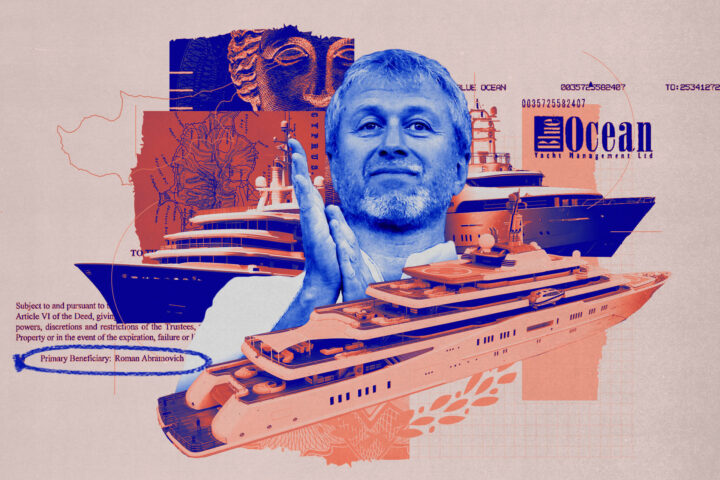RISK WATCH
By Dr Alan Waring
We all know Iran, don’t we? Or at least we think we do”. So said John Simpson, BBC World Affairs Editor, more than 10 years ago. A veteran Iran watcher, Simpson accompanied Ayatollah Khomeini on his return flight to Iran in 1979 from exile in France. The point he was making was that Iran had become so demonized in the Western media that objectivity and facts about Iran were not in the public perception. The common judgement by people who had never set foot in the country was: Iranians are a bad lot.
Where are we today? Despite some 15 years of ‘critical dialogue’ between the EU and Iran and a thawing of relationships from 1996 until last year, if anything the demonization of Iran – ‘the other’ – has worsened.
What has this got to do with Cyprus? Iran may seem a long way away but under the new presidency of Mahmoud Ahmadinejad regional tensions involving Iran are rising. The risk of armed conflict between the US and Iran has become more likely, with Israel and other countries being drawn into any crisis. In one ‘what if?’ scenario, Israel and Iran lob nuclear missiles at each other. Israel is right next door to us. The entire region including Cyprus would be affected by radioactive fallout. Such a crisis is probably not going to arise in the immediate future but clearly will become a higher probability if (a) Iran develops its own nuclear weapons and (b) the Iranian leadership is prepared to actually carry out its public threats to annihilate Israel.
Plus Ca Change
There is in all this a public perception that Iran and its leadership are a bunch of fanatical, uncivilised demons hell bent on starting World War III. Before the Iranians, it was the Chinese who were cast in this frame. The propagation of such a perception since 1979 and especially in the past twelve months may suit the strategic agenda of Western powers, notably the US, but the reality is very different.
I have known Iran intimately for 35 years. In our book Managing Risk written nearly a decade ago, Prof Ian Glendon and I included a risk profiling case study chapter on Iran which has been used widely in business schools. Eerily, the underlying analysis of Iran remains sound today even with a changed cast of characters.
Facts vs Misunderstanding
Unlike all other Middle Eastern countries, Iran has been an industrial economy for at least a century. In addition to the oil and gas industries, there are mature process and manufacturing industries, for example its own car industry. Iran probably has the largest number and some of the highest quality engineers and scientists in the region. There is a long tradition of a work culture, quite unlike many of its neighbours. The population is highly educated and sophisticated.
Despite a history of a diverse economy, the 5-year economic development plans which started in 1991 are all based on the assumption that the oil & gas reserves will run out sometime this century. Therefore, industrial and economic diversification has to accelerate to avoid over-dependence on a declining natural resource.
Desire for Change
Iran’s current population of some 72 million is growing fast. An estimated 50% are under the age of 24. After the attack by Iraq in 1980 and the tragic war 1980-1988 in which at least 450,000 Iranian combatants died (some estimates suggest 1m+), the population and economic reconstruction are recovering fast. The post-war younger generation have only known the Islamic Republic. They want new opportunities, new freedoms and a better life – but not necessarily a carbon copy of the USA. Westerners should not confuse their thirst for change with an invitation for cultural annihilation by Western, especially American, values and interests. While some of the latter are attractive, others remain distasteful and anathema to most Iranians.
Safe for Westerners
Although there is widespread dislike and mistrust of Western government policies and attitudes, this is not reflected in how westerners are treated in Iran. In my own experience, they are treated with respect, courtesy and genuine friendliness and it is a very safe environment. The risk of violent crime or verbal abuse is significantly lower than in the West. Also, Revolutionary Guards were removed from the streets years ago.
Female Emancipation
The position of women in Iran is not as usually portrayed in the West. Lots of women go to work and many hold senior or important positions. They have the vote. Women drive cars – quite heroically in Tehran-Karaj, a conurbation of 21 million people with even worse driver behaviour than Cyprus! There are some restrictions, however, such as the public dress code, which annoy many women and these may be reinforced under Ahmadinejad after a decade of liberalisation. Nevertheless, by Middle Eastern standards, Iranian women today are emancipated.
Foreign Interference
Change-orientated pragmatists struggle with conservative fundamentalists in the government. This dynamic has existed for at least the last 15 years. The tension is a reflection of the public at large. Whatever their differences, a perceived external threat will always result in the population rallying round the government. Those in the West who expect some kind of popular revolution sparked by foreign interference are fantasists.
Contradictory Certitudes
President Ahmadinejad and the Iranian leadership are often portrayed in the West as unworldly, narrow-minded clods who think and behave irrationally. This is a dangerous misconception. Anyone who has read Ahmadinejad’s open letter to Bush will be struck by its clarity and articulate content. What it reveals more than anything is that he and Bush may share a common sense of justice and other noble things; they just cannot see a common ground for achieving them. Such a clash of contradictory certitudes of course fuels the battle for ideological and political supremacy. Bush and the whole American theocracy and superpower domination have been accused of hypocrisy when it comes to justice. Ahmadinejad is humiliating Bush ‘big time’ in the region. The locals have found a new hero with tokhm-e bozorg (‘big balls’) and the more the Americans demonize him the more his stature grows in the region.
Jaw-Jaw Needed
The danger is that in seeking to curb and control Iranian assertiveness, hawks in Washington may be tempted to apply the traditional ‘might is right’ principle. A pre-emptive military strike against Iran, either directly or through Israel as proxy, would have horrendous ramifications. For example, current oil prices at around US$75 (unthinkable until recently) will seem quite benign; they could well rocket to perhaps US$150 or more. World recession could follow. Iran is also a far harder nut to crack militarily than Iraq was. We could be in for a long drawn out political, economic and military quagmire that would make the Iraq debacle seem tame.
Quiet diplomacy can work. Libya is a graphic example. The US-Iran megaphone diplomacy of recent years is unproductive if not counter-productive. Trusted ‘neutral’ facilitators and unobtrusive meeting places may be needed. Does Cyprus have a potential role here? Possibly, but recently both sides rejected the jaw-jaw option. The clock is ticking.
Dr Alan Waring is an internationally recognised risk management consultant who advises companies, organisations and government departments on a wide range of risk issues. Contact [email protected]. “Managing Risk” ISBN 1-86152-167-7.







